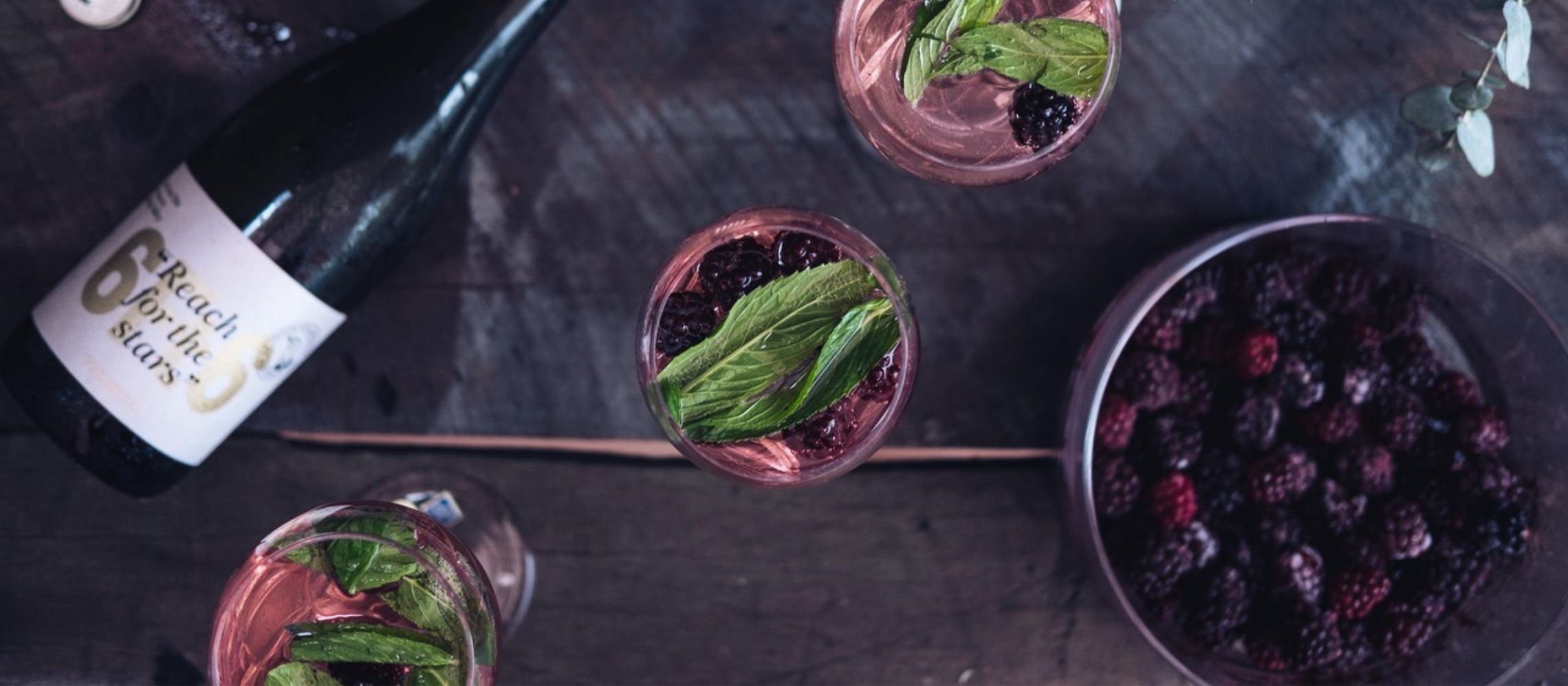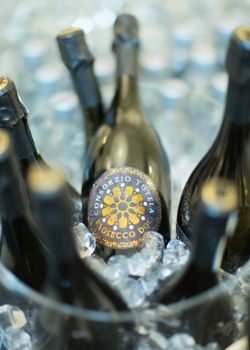Registration Open
1 June 2025
Judging
Date
23 & 24 March 2026
Winners Announcement
22 April 2026
1 June 2025
23 & 24 March 2026
22 April 2026

By : Alistair Morrell
There’s Prosecco – and then there’s premium Prosecco.
The Prosecco we’re most familiar with in the UK, USA and other parts of the world is DOC Prosecco. It tends to be quite fruity and flowery with light, rather than intense, bubbles. Finer versions – more of these later – can exhibit hints of tropical fruits, banana, hazelnut, vanilla and honeycomb. The DOC (Denominazione di Origine Controllata) indicates a certain level of quality, so a wine that’s going to be drinkable comes with medium acidity (3 levels of residual sugar – Brut, Extra Dry and Dry) and some refreshing, straightforward and uncomplicated apple and pear aromas.
Prosecco sales, in general, have grown at an astonishing rate since around the end of the first decade of this century, surpassing Champagne some 5 years ago, today selling over half a billion bottles (even seeing a 40% increase in sales in France, the home of Champagne) and playing a major part in sparkling wine sales in the UK and the USA. Of the 165 million bottles of Champagne and sparkling wine sold in the UK in 2018, 146 million were ‘non-Champagne,’ worth some £1.5 billion (roughly $1.9 billion): according to the Wine & Spirits Trade Association, the ‘lion’s share’ being taken by Prosecco. There is some sign, however, that what’s called ‘peak Prosecco’ may have passed, with sales hit by consumers exploring other sparkling styles, as well as the continued phenomenal growth in gin sales in the UK (sales exceeded £2 billion for the first time in 2018).
In the USA, where the total wine market grew to 408 million cases, worth more than $70 billion, in 2018, Prosecco now makes up 17% of sparkling wine sales, with one brand up almost 25%.
Prosecco’s success is largely down to its more accessible, fruit-forward / fruitier flavour as much as its price, especially when compared to the cost of Champagne. That lower price point means that whilst Prosecco outsold Champagne by over two-thirds in volume terms, its sales value was less than one fifth at €804 million against Champagne’s €5 billion.

In both countries, it’s the quality end of the market that’s seeing particularly solid growth, albeit from a much smaller base. To go back to the thinking behind my original statement, Prosecco is more than one iteration: indeed, it’s an extensive and varied appellation covering a number of different traditions, different geography, soils and climate (terroir) and different wine profiles.
If we’re going to look at premium Prosecco and what makes this so different, we need to make a comparison with what we’ll term ‘basic Prosecco’. The wine is mainly made from the Glera grape varietal but may include other grape varieties, such as Bianchetta Trevigiana.
Prosecco DOC Treviso is what most consumers drink in terms of Prosecco and what has become to be thought of as representing the wine. Produced in 9 provinces in the Veneto and Friuli Venezia Giulia regions, Treviso is the heart of the Prosecco DOC area, a flat area of countryside which, because it’s possible to use agricultural machinery in the vineyards, produces high yields per hectare.
Valdobbiadene Prosecco DOCG is a different kettle of fish (if that isn’t too strange a metaphor to use – but I want you to think beyond Prosecco DOC ). The area of production lies some 50 kilometres from Venice and 100 kilometres from the Dolomite mountains at altitudes of between 100 and 500 meters among the 15 communes that lie between Conegliano, the area’s cultural capital, and Valdobbiadene, the town at the heart of production. This denomination’s steep-sided vineyards (inclines of 30° and more), their position between the sea and the mountains, the mild climate, modified by altitude, with marked differences between day and night temperatures, their south-facing aspect with excellent sun exposure, the frequent heavy summer showers, yet the constant drying breezes and easy-draining soils, means it’s simply perfect for growing Prosecco’s Glera grape. The differences in topography – the gentler slopes around Conegliano, and the altogether steeper inclines around Valdobbiadene – together with the variation in soils – sometimes deep, rocky, sandy, clay-rich conglomerates of glacial origin, sometimes rich in iron oxides, sometimes less deep, porous marls and sandstones of marine origin – are micro-zones that each in their own way provide the best conditions of soil minerality, exposure to the sun, and ventilation, that create Proseccos with their own unique taste profiles. The wines are produced in two versions – sparkling (spumante), iconic for the denomination and a style that’s synonymous with Prosecco, and the less intense semi-sparkling (frizzante), with its fewer bubbles. What all these wines do have in common is their elegance, their pale straw-colour, gentle body, and distinctive fruity and floral nose.
These wines will never – can never – be a mass market because the yields are really very low due to the growing conditions in the area and the need for all work in the vineyards to be carried out by hand. Of special note among these are the famous Superiore di Cartizze and the Rive.
Conegliano Valdobbiadene Superiore di Cartizze DOCG comprises fewer than 110 hectares of vines located on the steepest hills in the commune of Valdobbiadene. In fact, the wines must be made from grapes grown on the Cartizze hill, around the San Pietro di Barbossa parish of Valdobbiadene, north of the Piave River, east of Valdobbiadene town and west of Farra di Soligo village. This is one of Veneto's longest-established vinicultural areas, one valley away from the Dolomites, characterized by its mild microclimate, cool growing season, as well as its varied terrain and is considered by many to produce some of the most opulent sparklers.
Within the DOCG (Prosecco Superiore) area is a sub-denomination: every one of the 43 villages which conform to the standards of DOCG zone has the option of declaring their village of origin, using the ‘Rive di’ phrase to highlight their distinctive expressions of terroir. Producers who use the Rive denomination tend to reserve it for their top labels, which come with the promise of a Prosecco made with special care and attention from the very best grapes and some these wines can indeed be spectacularly good.
DOC… DOCG, different areas within denominations, as well as sub-denominations… and completely different terroirs – it’s clear that not all Prosecco is the same: rather, this is a wine that very definitely deserves to become better-known than a one-size-fits-all poor man’s Champagne.

The article is contributed by Alistair Morrell, Wine Inspector, wine industry consultant, journalist and, commentator. Over 30 years as a wine business professional, Alistair shares his global knowledge, network, and experience of growers, importers, distributors and buyers.
The 2026 International London Wine Competition submission is now open. You can enter your wines now to get the super early bird pricing.